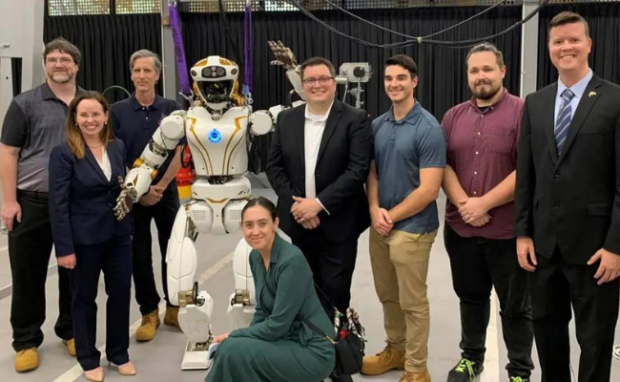Valkyrie NASA bot enters advanced testing
The National Aeronautics and Space Administration announced its first bipedal robot is undergoing its final testing phases. Interesting Engineering says NASA is conducting them at the Johnson Space Center in Houston, Texas. Soon, the Valkyrie bot will perform space tasks that are too dangerous or mundane for astronauts.
Outer space has numerous risks, such as radiation, debris, and extreme temperatures. That is why NASA plans to deploy robots along with space explorers. These machines could protect astronauts from these conditions and help them focus on more important activities. As a result, future space explorations could become more insightful and less dangerous.
This article will elaborate on the Valkyrie robot’s features to show how it could help astronauts. Later, I will reveal more details about its previous testing phase.
What are the Valkyrie’s features?
NASA has been developing its humanoid robot since last year, giving it numerous capabilities. For example, astronauts can power Valkyrie with a wall connection or a dual-voltage battery.
The latter only works for an hour but could be a great backup power source. Also, it may enable the robot to work far away from its wired power source.
“We’re targeting having this system online 22 hours a day,” Apptronik Chief Technology Officer Nick Paine said. “This does have a swappable battery, so you can work for four hours, swap the battery, and then keep going in a very quick duration.”
People could replace it with a mass simulator and capacitor, mimicking the battery’s electrical and mechanical properties. Moreover, the robot’s head has a Carnegie Robotics Multisense SL sensor, and its torso has hazard cameras.
These parts give the humanoid robot situational awareness. The torso also has a series of elastic rotary and linear actuators facilitating motion between the torso and pelvis.
The pelvis contains elastic rotary actuators and rotation joints to maintain the robot body’s stability. Moreover, the upper arms have four actuators with quick disconnects for convenient shipping and servicing.
You may also like: NASA streaming app will share news soon
The hands and lower limbs also have similar flexibility and serviceability. “Robots like Apollo are designed with modularity in mind to be able to adapt to many applications,” NASA Dexterous Robotics Team Leader Shaun Azimi stated.
“We’re not trying to replace human crews, we’re really just trying to take the dull, dirty, and dangerous work off their plates to allow them to focus on those higher-level activities,” he explained.
Apptronik CEO Jeff Cardenas said his company is developing a similar robot called Apollo. It will perform earthly tasks like working in warehouses, moving packages in manufacturing plants, and performing other supply chain-oriented tasks.
What was Valkyrie’s early testing phase?

In July 2023, I reported about Valkyrie’s initial testing phase. NASA must ensure the robot can perform in harsh outer space conditions. That is why they sent it to the Land Down Under!
They deployed the robot to a Woodside Energy facility in Western Australia. The energy company tested the bot’s software and shared data to facilitate its development.
“NASA plans to leverage experience operating Valkyrie in Woodside’s facilities to learn how to better design robots for work in dirty and hazardous conditions, like those found on the Moon at the long-term worksites and habitats that will be established as part of future Artemis missions,” said the space org.
You may also like: World’s first flying car now available
The NASA robot facilitated the company’s operations by inspecting infrastructure. More importantly, it protected the workforce by confirming environments are safe.
Valkyrie walked around the facility and inspected it using its hazard cameras. Its humanoid form gave it “anthropomorphic touches” to feel more like a regular coworker to human astronauts.
“Our robot is soft. If you brush against it while you’re working, you don’t want to feel this cold, hard metal. You want it to feel natural like you’re working next to another human being. The soft goods – the clothes we put on the robot – give it that feel, that appearance of being more comfortable to be near,” JSC team leader Nicolaus Radford stated.
Conclusion
NASA announced its Valkyrie robot is undergoing its final testing phase. Later, it will assist astronauts in future missions by performing dull and dangerous tasks.
More importantly, we may have such robots working in various industries. After all, Apptronik said it is developing a similar bot for earthly tasks!
The world’s first humanoid robot factory will also open soon. Learn more about that amazing story and other digital trends at Inquirer Tech.